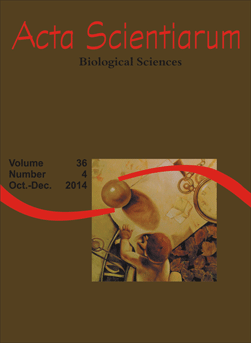<b>Experimental study on the efficiency of different types of traps and baits for harvesting <i>Macrobrachium amazonicum</i> (Heller, 1862)
Resumo
Macrobrachium amazonicum is a freshwater prawn endemic to South America with wide distribution in Brazilian Amazon rivers. In estuary and freshwater streams of the Pará State, they are captured with different types of traps locally know matapi. This study evaluated the efficiency of traps of different sizes (large, medium and small) and baits (babassu coconut and fish) for sampling this shrimp. Samplings were conducted with 24 traps with different treatments (trap size and bait). We captured 909 specimens. Higher mean catches were observed in traps baited with babassu coconut. Interactions between babassu coconut bait and medium matapi (BM-M), and fish bait and large matapi (FISH-L) were significant. Carapace length (CL) varied significantly between sites (F = 12.74, p < 0.01). The total maximum length was13.65 cm. Medium traps baited with babassu coconut were the most successful in the tested combinations, however, there was a clear correlation between size trap and size of shrimp, for both body weight and carapace length.
Downloads
DECLARAÇÃO DE ORIGINALIDADE E DIREITOS AUTORAIS
Declaro que o presente artigo é original, não tendo sido submetido à publicação em qualquer outro periódico nacional ou internacional, quer seja em parte ou em sua totalidade.
Os direitos autorais pertencem exclusivamente aos autores. Os direitos de licenciamento utilizados pelo periódico é a licença Creative Commons Attribution 4.0 (CC BY 4.0): são permitidos o compartilhamento (cópia e distribuição do material em qualqer meio ou formato) e adaptação (remix, transformação e criação de material a partir do conteúdo assim licenciado para quaisquer fins, inclusive comerciais.
Recomenda-se a leitura desse link para maiores informações sobre o tema: fornecimento de créditos e referências de forma correta, entre outros detalhes cruciais para uso adequado do material licenciado.












1.png)




3.png)













